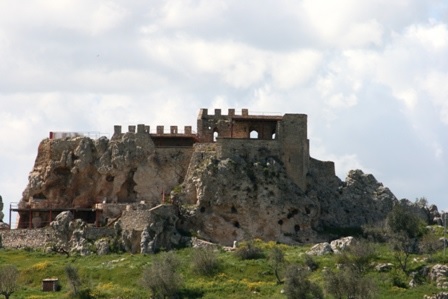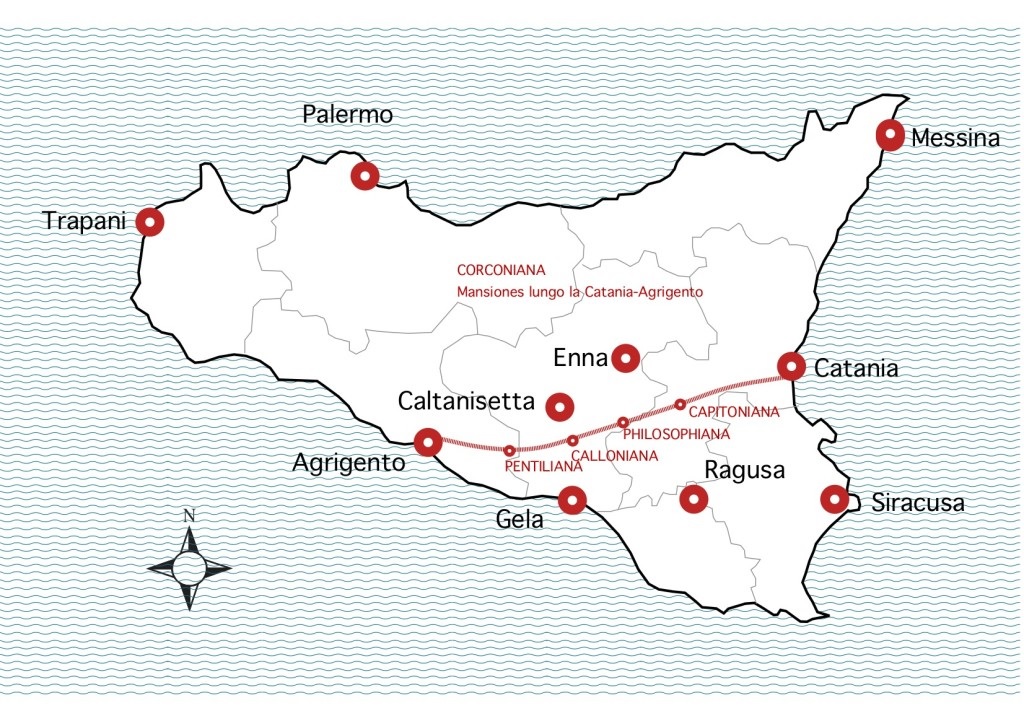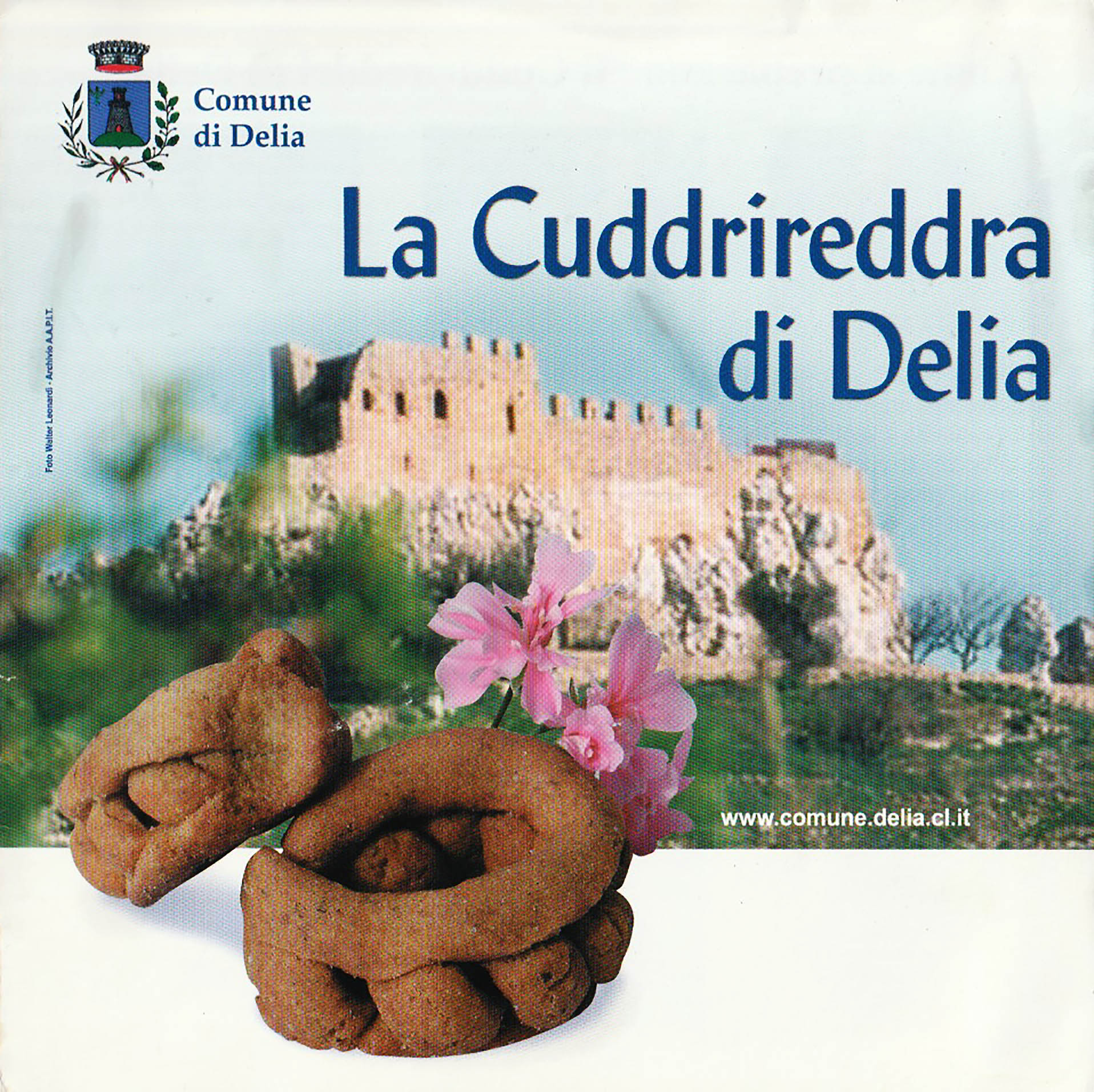Delia, Castello SABUCI (Lu Castiddrazzu) Sicilia CL

nLa regione fu abitata dalla preistoria fin la classica ellenistica. Il forte si trova in una posizione strategica per il controllo della strada romana Catina-Agrigentum (lungo la quale il Itinerarium Antonini menziona, tra gli otto stazioni del periodo tardo romano, la statio Pentiliana situata a Delia) . La costruzione del castello risale probabilmente al periodo bizantino (IX secolo), con una funzione militare per garantire un passaggio.
La région était déjà habitée depuis les temps préhistoriques et classique hellénistique. Le fort est situé dans une position stratégique contrôlant la route romaine Catina-Agrigentum (le long duquel le Itinerarium Antonini mentionne, parmi les huit stations de la fin de la période romaine, la statio Pentiliana située à Delia). La construction du château date probablement de l'époque byzantine (neuvième siècle), avec une fonction militaire pour assurer le passage.
The area was already inhabited since prehistoric and Hellenistic times. The fort is located in a strategic position in the control of the Roman road Catina-Agrigentum (along which the Antonini Itinerarium lists the Pentiliana statio located in Delia, among the eight stations of the late Roman period). The construction of the castle probably dates from the Byzantine period (ninth century), with a military function to ensure the passage.

Il 18 giugno dell'anno 827, i musulmani sbarcarono a Mazara per iniziare la lunga colonizzazione della Sicilia che durerà 70 anni. Delia si trova lungo il percorso che va da Mazara a Mineo, la fortezza bizantina "Sabuci" è stata presa in questo periodo.
Da 827-1091, la Sicilia è stata conquistata dai Normanni che hanno ampliato e rafforzato il castello Sabuci. Questa roccaforte è stato più volte attaccato come indicato da alcuni segni di bruciature che risalgono al XII secolo. Rioccupato è stato nuovamente abbandonato dopo la guerra del Vespro del 1282 contro i francesi. Il castello passò nelle mani di Alagona Blasco, uno dei quattro vicari che ha governato la Sicilia in quel momento. Nel 1362 la fine della guerra civile, il re Federico III ordina la distruzione del castello Sabuci che potrebbe servire come sede di nuove ribellioni.
Nel 1436-1437 Guglielmo Raimondo Moncada ottiene la licenza per ricostruire il castello Sabuci che verrà abbandonato definitivamente alla fine del XVI secolo.
Nel 1878 il castello è stato inserito tra i monumenti del Regno, e ha avuto il suo primo restauro.
Le 18 Juin de l'année 827, les musulmans débarquent à Mazara pour commencer la longue colonisation de la Sicile qui durera 70 années. Delia étant située le long de la trajectoire qui va de Mazara à Mineo, la forteresse byzantine "Sabuci" a été prise en cette période.
De 827 à 1091, la Sicile fut conquise par les Normands qui ont élargi et renforcé le château de Sabuci. Cette place forte fut à de nombreuses reprises attaquée comme l’indiquent certaines traces de brûlure remontant au XII è siècle. Réoccupée elle a été une nouvelle fois abandonné après la guerre des Vêpres de 1282 contre les Français. Le château de Delia passe aux mains de Blasco Alagona, un des quatre vicaires qui gouvernaient la Sicile à cette époque. En 1362 la guerre civile terminée, le roi Frédéric III commandes la destruction du château de Sabuci qui pourrait servir de foyer à de nouvelles rébellions.
En 1436-1437 Guglielmo Raimondo Moncada obtient licence pour reconstruire le château de Sabuci qui sera définitivement abandonné à la fin du XVIe siècle.
En 1878, le château a été inclus parmi les monuments du Royaume, et il jouissait de sa première restauration.
On June 18 of the year 827, the Muslims landed in Mazara to begin the long colonization of Sicily that will last 70 years. Delia being located along the trajectory that goes from Mazara to Mineo, the Byzantine fortress "Sabuci" was taken in this period.
From 827 to 1091, Sicily was conquered by the Normans who expanded and strengthened the castle of Sabuci. This stronghold was repeatedly attacked as indicated by traces of burning dating back to the 12th century. Reoccupied it was once again abandoned after the Vespers War of 1282 against the French. The castle of Delia passes to the hands of Blasco Alagona, one of the four vicars who governed Sicily at that time. In 1362 the civil war ended, King Frederick III commands the destruction of the castle of Sabuci which could serve as home to new rebellions.
In 1436-1437 Guglielmo Raimondo Moncada obtains license to rebuild the castle of Sabuci which will be definitively abandoned at the end of the XVIth century.
In 1878, the castle was included among the monuments of the Kingdom, and had its first restoration.

